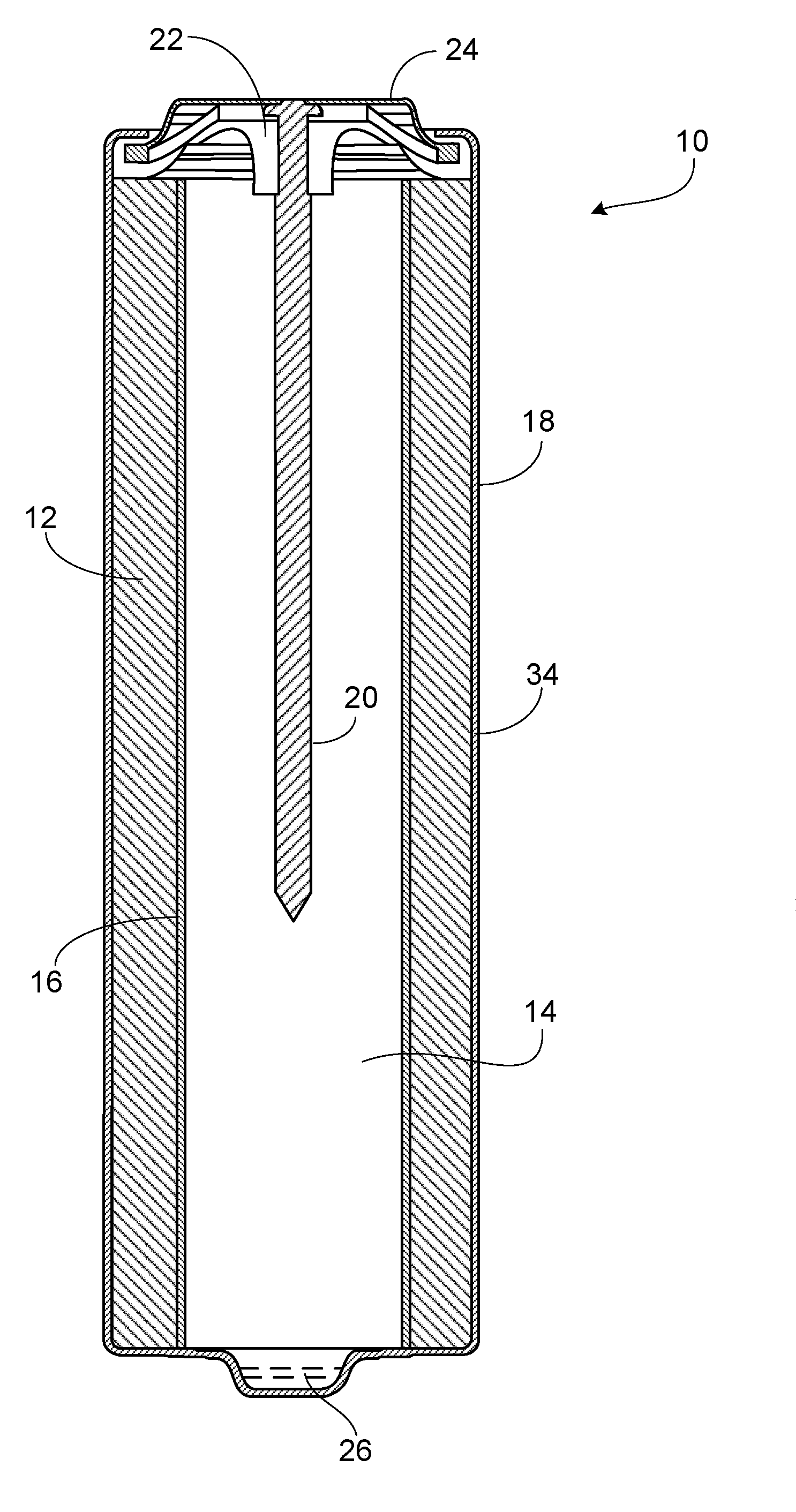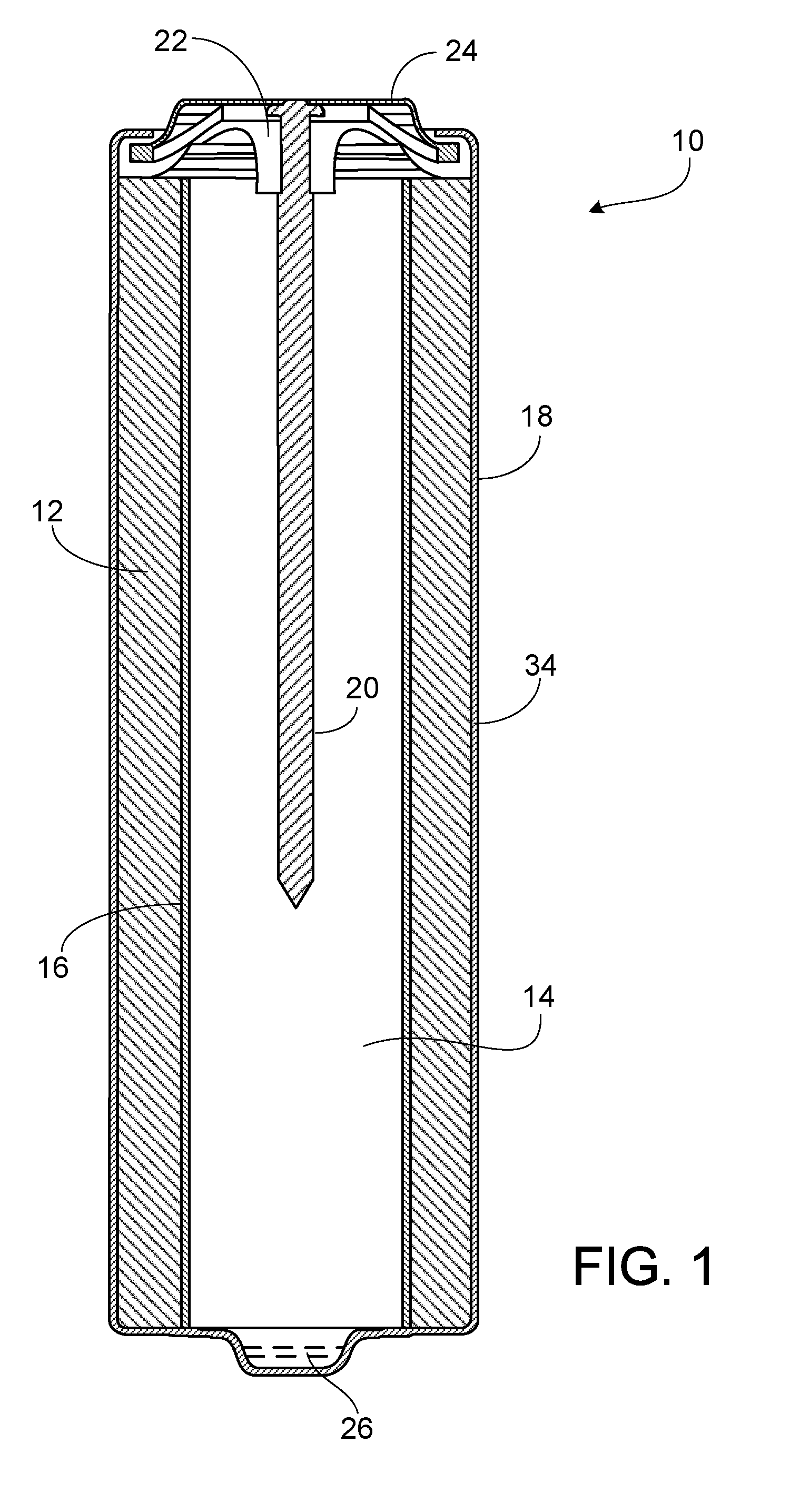Alkaline primary cells
a primary cell, alkaline technology, applied in the direction of alkaline accumulators, cell components, electrical equipment, etc., can solve the problems of increased susceptibility to leakage due to internal gassing pressure, zn anode may be prone to gas generation, and engineering problems
- Summary
- Abstract
- Description
- Claims
- Application Information
AI Technical Summary
Benefits of technology
Problems solved by technology
Method used
Image
Examples
Embodiment Construction
[0010]Referring to FIG. 1, battery 10 includes a cathode 12, an anode 14, and a separator 16 disposed in a cylindrical housing 18. Battery 10 also includes current collector 20, seal 22, and a negative metal end cap 24, which serves as the negative terminal for the battery. A positive pip 26, which serves the positive terminal of the battery, is at the opposite end of the battery from the negative terminal. An electrolytic solution is dispersed throughout battery 10. Battery 10 can be an alkaline battery, for example, an AA, AAA, AAAA, C, or D battery.
[0011]The cylindrical housing 18 may be thin walled, e.g., typically from about 0.25 mm to about 0.15 mm wall thickness for AA and AAA cells, and about 0.30 mm to about 0.20 mm for C and D cells.
[0012]Cathode 12 includes one or more cathode active materials, such as manganese dioxide, silver oxide, nickel oxyhydroxide, or copper oxide. Preferably, the cathode active material is selected from the group consisting of manganese dioxide, e...
PUM
 Login to View More
Login to View More Abstract
Description
Claims
Application Information
 Login to View More
Login to View More - R&D
- Intellectual Property
- Life Sciences
- Materials
- Tech Scout
- Unparalleled Data Quality
- Higher Quality Content
- 60% Fewer Hallucinations
Browse by: Latest US Patents, China's latest patents, Technical Efficacy Thesaurus, Application Domain, Technology Topic, Popular Technical Reports.
© 2025 PatSnap. All rights reserved.Legal|Privacy policy|Modern Slavery Act Transparency Statement|Sitemap|About US| Contact US: help@patsnap.com


